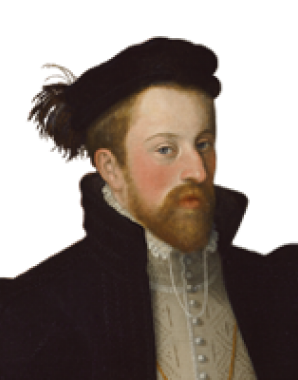The tripartite division of the Austrian inheritance
Emperor Ferdinand I divided the Austrian hereditary lands between his three sons. Only in the course of the seventeenth century were the territories reunited.
Ferdinand I had had great trouble wresting a part of the Habsburg domains from his brother Charles V. In order to spare his own sons similar ordeals, he willed the division of the Austrian lands into three: Maximilian received Danubian Austria (present-day Lower and Upper Austria) and the kingdoms of Hungary and Bohemia; Ferdinand was ruler in Tyrol and the Austrian territories in Swabia and Alsace; and Inner Austria (Styria, Carinthia, Carniola, and the Adriatic territories) fell to the youngest son Charles. Until reunification in the seventeenth century, there was a large degree of independence between developments in the three sectors. The tripartite division led to the archducal seats of Graz and Innsbruck becoming centres of the Counter-Reformation.
Because Inner Austria bordered on the Ottoman Empire, Charles II frequently had to agree to compromises with the Estates. Although his court in Graz was strictly Catholic, the nobility, whose support he needed in the war against the Turks, was largely Lutheran. As a result, the second half of the sixteenth saw Protestantism in Austria reaching a high point at which the proportion of Protestants amongst the population was very likely greater than 70 per cent. Charles’s son and successor, the later Emperor Ferdinand II, abandoned his father’s readiness to compromise and pushed through the Counter-Reformation in Inner Austria with merciless determination. In 1619 he reunited Inner Austria with Danubian Austria.
Archduke Ferdinand of Tyrol, Emperor Ferdinand’s favourite son, also implemented the Counter-Reformation uncompromisingly in his territories. As Tyrol was far removed from the Turkish threat, there was no necessity to make concessions to the Estates; even if there had been, only a small proportion of the Tyrolean nobility were Protestant. At the castle of Ambras Ferdinand assembled large art collections, which are now housed in various Austrian museums. The court of Innsbruck attracted many talented individuals. On account of his morganatic marriage with Philippine Welser, Ferdinand had no legitimate male heirs, so that in 1595 the territory briefly came under the head of the house of Habsburg once again. In 1602, however, the reins of power were taken over by Maximilian III, whose cousin Leopold V founded the younger Tyrolean line. When this became extinct in 1665, Emperor Leopold I was free to reunite all the Austrian hereditary lands under one single crown.

























